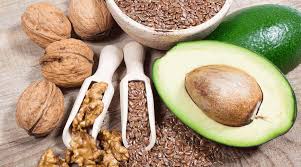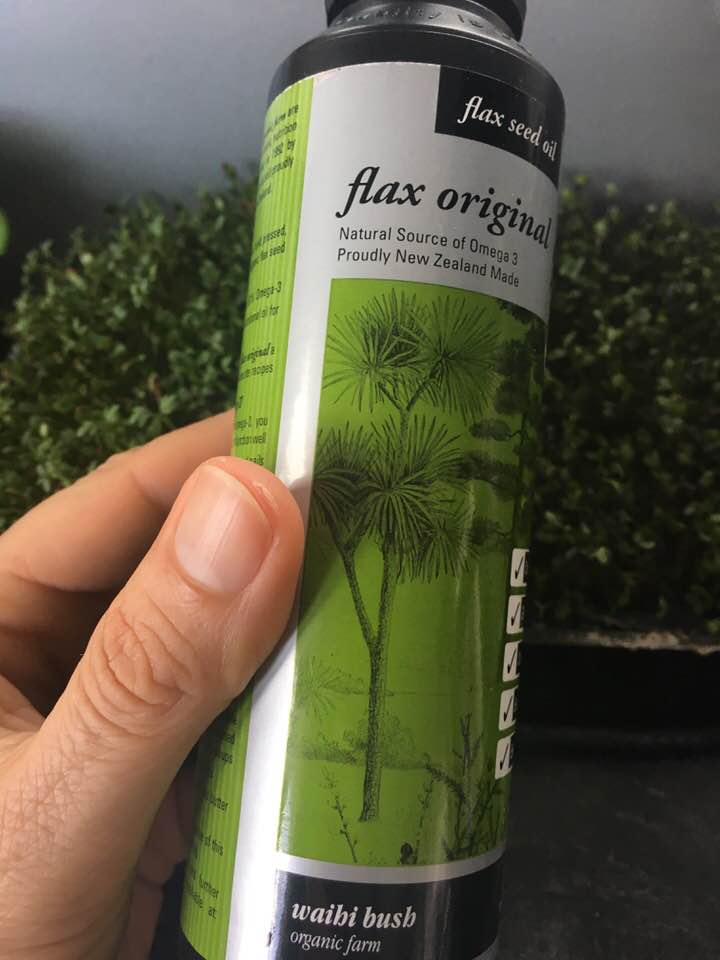Omega 3 - Conversion of ALA to EPA and DHA
Nutrition, July 26, 2018
There is a common misconception that you have to consume fish or fish oil supplements to get your daily required omega 3 essentail fatty acids. Plant based omega 3 sources can be sufficient with the correct understanding.
Omega 3 and 6 are both polyunsaturated essential fatty acids that are not produced in the body so have to be sourced from our food. Omega 6 helps promote inflammation and clotting (important in wound healing), omega 3 has anti-inflammatory roles as well as supporting brain function + mood, helps regulate blood sugars, blood pressure, cholesterol levels, and can also benefit autoimmune diseases.
Trying to achieve a 1:1 ratio of omega 6:3 would be optimal but this is impossible with the typical western diet high in meat and dairy. Many people are contributing towards inflammatory and chronic disease (e.g heart disease, arthritis, and cancer) with ratios up to 30:1. Most of the nutrition community recommend cold water fish as the best source of Omega 3 (DPA and EHA) BUT taking the entire fish into account you also have cholesterol, saturated fat, and probable contamination (more likely in the bigger fish) from mercury, dioxins, and other persistent organic pollutants like PCB's (polychlorinated biphinyls*). Poor quality fish oils especially from farmed fish have been shown to be more inflammatory, and possibility contaminated (After analysing 32 fish oil brands new research by scientists at the University of Aucklands Liggins institute found only 3 had the correct Omega 3 concentrations as listed on the label). Expanding the picture out we also have to be weary of sustainability#. There simply isn't enough fish for the ever growing population on earth to be having there "2-3 servings of fish a week". Flaxseed is one of the richest commercial source of plant-based Omega 3 fatty acids. The prominent Omega 3 in flaxseed oil is alpha linolenic acid (ALA). ALA is the parent compound of Omega 3 and can be converted by enzymes into the longer chain Omega 3 fatty acids EPA (eicosapentaenoic acid) and DHA (docosaheaxaenoic acid). Algae based DHA and EPA is also available as a supplement. Dr. Joel Khan (prominent cardiologist and author of The Plant-Based Solution) recommends 250mg of this form daily with some walnuts. Algae are the most common primary producers in the ocean converting light and CO2 into evergy. Fish gain the DHA and other essential fatty acids from the algae they consume - so supplements made directly from from cultivated marine algae would seem to offer a more concentrated product, and on balance a far more sustainable option to fish. Why not get the omega 3 at the source instead of going through the middle man (in this case fish)?
There is controversy around the issue of how much ALA is converted into EPA and DHA. Humans have enzymes which can facilitate the conversion but unfortunately the usual Western eating habits interfere with the conversion. There are a number of factors which hinder this conversion:
- High intake of Omega 6 relative to Omega 3.
- A deficiency of the nutritional co-factors vitamins B3 (found in peas and mushrooms), B6 (present in soy and oats), C (naturally in broccoli, orange and kiwifruit) , the minerals zinc and magnesium support conversion enzymes.
- Trans-fatty acids destroy the conversion enzymes and tissues have to manufacture new ones to replace those damaged by trans-fats.
- Alcohol abuse poisons these enzymes (NZ society needs to drastically reduce our alcohol consumption)
- Excess insulin in the bloodstream diminishes enzyme function.
The big question is how much dietary ALA do our tissues convert into EPA and DHA? These rates will vary by gender, age and other genetic factors. Women generally are more efficient at converting ALA into EPA and DHA because estrogens support the conversion enzymes.
Human conversion of ALA into EPA ranges from 8% to 20%. Conversion of ALA to DHA ranges from 1% to 9%. One tablespoon of flaxseed oil per 45kg of bodyweight is the recommended daily dose. To maintain general health we need at least 1000 mg daily combined EPA/DHA.
ALA content of one tablespoon of flaxseed oil (Flax Original Oil - NZ made) is around 8600 mg. So each tablespoon of flaxseed oil provides:
- 20% conversion of 6000 mg of ALA = 1720 mg EPA
- 4% conversion of 6000 mg of ALA = 344 mg DHA
- Combined, converted EPA/DHA per tablespoon flaxseed oil = 2064mg
Women may be more efficient in the conversion of ALA but most men would be using 1 ½ to 2 tablespoons of flax oil daily since men generally weigh more than women. Improving dietary and lifestyle factors will definitely improve the conversion of ALA into EPA and DHA.
So eat a plant based whole food diet, keep your alcohol to a minimum, and have a table spoon of flaxseed oil (we drizzle it on salads, and you can have it in smoothies). Our family use Flax Original flax seed oil produced by Waihi Bush Organic Farm. This company is local (please support local if possible) and they are passionate about the environment, nutrition, and well-being.
*PCBs, or polychlorinated biphenyls, are highly toxic industrial compounds. They pose serious health risks to fetuses, babies and children, who may suffer developmental and neurological problems from prolonged or repeated exposure to small amounts of PCBs.
#Production of fish in the 1950's was 19 million tons, this has risen to 163 million tons by 2009. 70% of the worlds fish stocks have been fully exploited or depleted. It has been estimated that by 2050 there will be a complete collapse of food fisheries world wide unless practice changes.
Another great product is Lifestream V-Omega 3 + Vit D. They claim to have 66% more DHA per capsule than standard fish oil with the advantage of added Vit D (works with calcium to support its absorption in the bone)


.jpg?version=8)